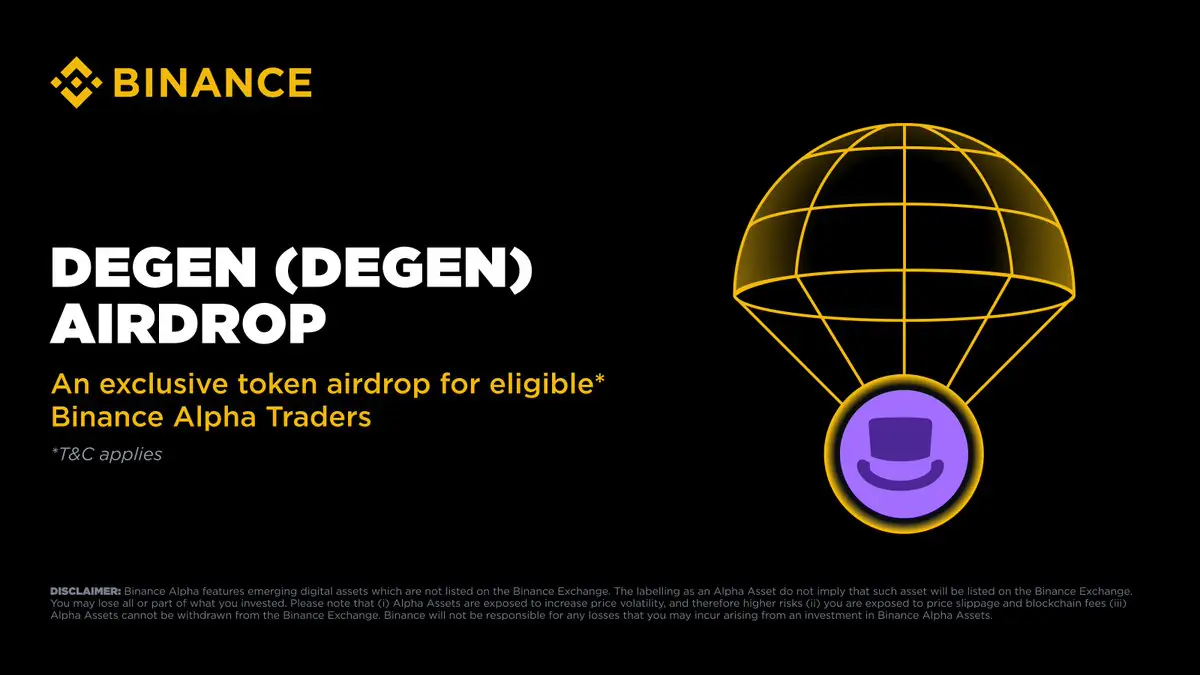 By Dr. Jim Dahle, WCI Founder
By Dr. Jim Dahle, WCI FounderTax-loss harvesting is the process of claiming losses to use on your taxes without actually changing your portfolio in any significant way.
For example, a typical tax-loss harvesting move for me would be to wait until the market drops; then I'd take the last one or two or three tax lots of VTI (the Vanguard Total Stock Market Index Fund ETF) that I have purchased and sell them. Thirty seconds later, I use the money from those sales to purchase a single lot of ITOT (the iShares Total Stock Market Index Fund ETF). My portfolio really hasn't changed in any significant way, but I may have booked a $1,000, $10,000, or even $100,000 loss that I can use on my taxes. An unlimited amount of those losses can be used against capital gains and up to $3,000 per year can be used against ordinary income, with all unused losses being carried forward indefinitely.
I don't find this process to be particularly challenging. But I also have two decades of experience putting in buy and sell orders—and about that much time teaching others how to do this process. Like the Backdoor Roth IRA process, I am continually amazed at all of the different ways people can screw up tax-loss harvesting. Let me outline a few of them today in the hopes that it will help others avoid them.
#1 Trying to Tax-Loss Harvest in a Retirement Account
You only pay capital gains taxes on gains in your taxable non-qualified brokerage account. You don't pay them on gains in tax-protected accounts like 401(k)s, Roth IRAs, HSAs, and 529s. Since capital gains taxes don't apply to those accounts, capital losses inside these accounts don't count for anything. So, don't bother trying to tax-loss harvest in those accounts.
#2 Running Afoul of Wash Sale Rules
You can't sell shares of a stock or mutual fund, book the loss, and then buy back shares of the exact same stock or fund immediately. This is called a wash sale, and the loss is disallowed. You can't buy that investment for 30 days afterward. You also can't buy it within the 30 days just before, unless you also sell that particular tax lot of shares.
You can't buy shares on February 15, buy shares again on March 15, and then just sell the first tax lot on March 20 and hope to claim a loss. That's a wash sale. No loss for you. You have to sell the February 15 lot AND the March 15 lot. No problem with that. You probably want to anyway, so this isn't usually a huge deal as long as you understand the rule. Incidentally, wash sale rules don't apply to cryptoassets, so sell your Bitcoin and buy it back immediately every time it drops in price.
More information here:
Is Tax-Loss Harvesting Worth It?
Tax-Loss Harvesting Pairs and Partners
#3 Worrying Too Much About Wash Sale Rules
When people first learn about the wash sale rules, the next thing they usually do is get all nuts about them. For example, one of the rules is that you can't sell shares in your taxable account and then just buy those same shares in your IRA and claim the loss. Seems like a reasonable rule, right? Guess what? It doesn't apply to 401(k)s. You can sell the shares in your taxable account and buy those exact same shares 10 seconds later in your 401(k). No wash sale. Maybe it breaks the spirit of the wash sale rule, but it certainly doesn't break the letter of the law.
Another common one is that people start going bonkers trying to interpret what the IRS means when it says you can't buy another security that is “substantially identical” and claim the loss. As long as it is a different stock or a different fund, it's fine. You can't exchange two share classes of the same fund (sell the mutual fund and buy the ETF version of a fund, for instance), but just about everything else goes.
This one again may seem to break the spirit of the law (for example, swapping one total stock market fund for another, as in my example above), but after a decade-plus of challenging anyone to show me a case where the IRS had a problem with it, I still don't know anybody who knows anybody who was audited on this point and had a loss disallowed. The argument for swapping one total stock market fund for another might be a little weak, but they are separate funds run by separate companies that own different stocks as they sample the index. If it really bothers you, swap a total stock index fund for a 500 index fund. Their correlation is still 0.99, but one has 500 stocks and the other has 4,000. Pretty hard to argue those are “substantially identical.”
#4 Turning Qualified Dividends into Non-Qualified Dividends
Most stock dividends and, thus, most stock mutual fund dividends are “qualified dividends.” They're qualified with the IRS for a lower tax rate than “ordinary dividends.” However, qualified dividend tax treatment isn't for day traders. You have to own the stock for 60 days within the 121 days around the ex-dividend date to get that special tax treatment.
If you bought shares on March 15, received a dividend on March 25, and tax-loss harvested the shares on April 20, that March 25 dividend is going to be taxed at the higher ordinary income tax rates. If the dividend was $1,000 and you're in the top tax brackets, that could mean paying $408 in tax instead of $238 on that dividend. That tax loss had better be worth more than $160 in tax benefit. Even worse, if you had just waited a few more weeks to tax-loss harvest, you could have probably had the full loss AND the qualified dividend treatment. Only in a very short downturn (like the March 2020 Coronabear) do you have less than 60 days to do your tax-loss harvesting. In most bear markets, you literally have months to get it done.
#5 Exchanging from One Mutual Fund Family to Another at Fidelity
Most people investing in stock mutual funds in a taxable account should be using ETFs instead of traditional mutual funds. You don't have to, though. If you use traditional mutual funds, you just exchange the two funds at 4pm ET instead of selling one and then buying another during the day. That usually works fine. So, imagine my surprise when I got this email from a Fidelity investor:
“I wanted to take advantage of the markets being down and did some tax-loss harvesting in my brokerage account at Fidelity. I saw the option when going through the process to do an ‘exchange' as opposed to just selling the fund that I wanted to tax-loss harvest and then separately buying the fund I wanted to exchange it with. I mistakenly thought this would lead to the trade going through on the same day to avoid the daily fluctuations in the market. When I did the exchange in this way, the sale went through on April 8 (markets at their lowest recently) and the buy went through on April 9 (the day the markets started to rebound). So, it seems like I actually lost money in this exchange. I think I just got terribly unlucky with selling the day before and then buying back on the day the market rebounded.
April 7 — Exchange trade entered into Fidelity (PRWAX exchange for FXAIX) April 8 — Sale of PRWAX went through. April 9 — Sale of PRWAX settled. Purchase of FXAIX went through.”I couldn't believe it. How could Fidelity possibly think this was OK? I've used “exchange” at Vanguard in the past (although admittedly always with two Vanguard funds), and they really did “exchange”—one being sold at 4 PM and the other being bought at 4 PM on the same day. I suggested this WCIer continue to push this with Fidelity, as I think the brokerage should make up her loss to her, especially since there was no warning given to her that these two trades would occur on separate dates. I'll let you know if she succeeds.
In the meantime, don't exchange between two different fund families, at least at Fidelity.
More information here:
How to Tax-Loss Harvest with Vanguard
Tax-Loss Harvesting with Fidelity
#6 Not Exchanging Funds at Vanguard
Another WCIer emailed me with almost the opposite problem at Vanguard.
“I looked again and I was up to like $45,000 in losses. I decided to try tax-loss harvesting again, intending to just do it over the phone with Vanguard. After sitting on hold for a while, and then with clinic patients starting to arrive, I ditched the customer service rep and decided to do it online. I saw a blog post saying to just sell one fund and buy the other, NOT to use the “exchange” tab on the website. Fair enough. So I sold VTSAX for around $180,000 and VTIAX for around $45,000; all lots were red since I started contributing about a year ago. I bought an equal amount of an S&P 500 index, but then was short about $10,000 to buy a different international index. I looked at why and realized it hadn’t credited me any cash for the sales I had just made; it was forcing me to use money market again, and I didn’t have quite enough to cover. So I left the $45,000 alone, in an effort to be cleaner and keep it to only a single transaction. [I] came back to it early this morning and bought the different international fund with the cash that had settled since yesterday. Well, since it was a mutual fund, the trade didn’t go through until close of business today, and you saw what happened to the markets in the middle of the trading session when Trump announced a 90-day pause on tariffs. Luckily the international funds *only* went up 5.85% vs. 9.52% for domestic, but what a disaster! I essentially lost $2,500 trying to tax-lost harvest to reduce my 2025 marginal tax burden by only $1,000.”
I'm not sure why Vanguard didn't use the money from the sale for the purchase. I'd be on the phone with Vanguard to try to sort this out and see if it would make me whole if I couldn't get it sorted out in advance. That can be pretty tough when doing this between patients, though.
#7 Putting in Mutual Fund Orders Too Early in the Day
These last two examples demonstrate some of the reasons why I generally prefer ETFs to traditional funds in taxable accounts. There are also more and better tax-loss harvesting partners. ETFs, at least when there aren't both traditional and ETF share classes for that fund, are a bit more tax-efficient due to their ability to shed capital gains via the share destruction process with the authorized participant.
However, there is yet another advantage of ETFs when tax-loss harvesting. Imagine you put in an exchange order at 11am ET on April 9, 2025. Then, President Trump announced a 90-day pause on tariffs, and the market went up 10% before 4pm, when your exchange order took place. Instead of realizing a capital loss, you realize a capital gain!
The way to avoid this, if you still want to use traditional funds in your taxable account, is to wait until 3:50pm or so to put in that exchange order. While it is generally inadvisable to put in ETF or stock buy/sell orders during the first few minutes or last few minutes of a trading session due to increased volatility, it's probably wise when tax-loss harvesting traditional funds with an exchange order to wait until the last few minutes of the day.
#8 Wading into Volatile Markets
Volatile markets are generally not a great place to play. Most of the time when you're buying and selling shares, you don't want or need volatility, and it's best to avoid it whenever possible. However, the best tax-loss harvesting opportunities usually are during serious market volatility. That's a risky time to be trading, so be extra careful. Or just wait until things are a little less volatile, even if it means you don't get every last loss that you could otherwise capture.
#9 Not Having a Plan and Being Slow
Even when trading ETFs, you don't want to let much time pass between your sell order and your buy order, especially in a volatile market. I'm usually aiming to complete the second order within one minute of the completion of the first one. I sell the shares. Then, I check the order status to make sure it executed. Then, I immediately put in the buy order. Then, I check the order status to make sure it executed.
I use market orders, and I only use very liquid ETFs, so these trades, even six-figure trades, generally happen nearly instantaneously. To do that, you need to be comfortable putting in buy and sell orders long before you wade into a volatile market to try to capture some tax losses. It's probably best if you actually write down your plan in advance and keep multiple browser tabs open with all the info you could possibly need to execute the trade. You need to be accurate, but you also want to be efficient. You don't want to sell $100,000 worth of shares and then only buy $10,000 worth of shares or put in the wrong ETF ticker or accidentally put in two sell orders instead of one sell and one buy order or sell the wrong tax lot or anything else.
Plan your work, and work your plan. There is no rush to put in the sell order, only the subsequent buy order. If you're too slow, it's possible the market price could rise in between your sell order and your buy order, and the exchange could cost you more from being out of the market than you're gaining in tax benefit. But that might not be nearly as bad as putting in the wrong buy order in the first place.
More information here:
10 Things to Know When Tax-Loss Harvesting a Large Taxable Account
#10 Worrying About Buying with Unsettled Funds
I usually don't have enough settled cash in my account to cover the purchase without using the “unsettled cash” from the sale to buy the new shares. This is not a problem—at least not when using ETFs (see #5 and $6 above for some WCIers' experience with traditional funds). However, the brokerage will usually pop up a scary-looking warning telling you that you're buying with unsettled cash. That's OK. Don't let it keep you from putting in the buy order part of the tax-loss harvest. It'll be fine. I promise. The cash from the sell order will settle in 2-3 days by the time it is needed to finalize the buy order.
#11 Swapping Traditional Funds for ETFs (and Vice Versa)
If you really want to make a mess, change from traditional funds to ETFs or vice versa while tax-loss harvesting. If going from a fund to an ETF, you have to wait until the next day to complete the swap. The fund sale doesn't take place until 4pm, and by then, the market is closed. It's too late to buy the ETF. If the market goes up overnight, you'll really be kicking yourself. If you're going from an ETF to a traditional fund, it isn't as bad, especially if you wait until a few minutes before 4pm to put in the orders. The market can still rise on you, but it's unlikely to rise too far. It might even fall a little bit and give you a little extra kicker. ETF and mutual fund trades don't always settle on the same day either, which can cause issues.
Do yourself a favor. Use one or the other, not both, in your taxable account. And preferably ETFs.
#12 Tax-Loss Harvesting Frenetically
Some people try to eke out every bit of loss they can. They tax-loss harvest, and then the next day when the market falls again, they tax-loss harvest again. Then again the next day. And again the following week. And maybe the week after that. They do it all the way down a bear market. But due to the way the wash sale rules work, if you're doing this more frequently than every 30 days, you need additional tax-loss harvesting partners for every swap.
Never tax-loss harvest into a fund you're not willing to hold forever, of course. But if you're using five or six partners per asset class and have five or six asset classes in the taxable portion of your portfolio, you may eventually end up with 30+ holdings in your taxable account. Nobody wants that.
It gets even worse if you hire a company to do this for you, particularly if you have hired someone to do “direct indexing.” The idea behind it is probably fine if the cost is very low (like 10 basis points) but only if you want to use this service/advisor for the rest of your life. If you decide in a year or two that you no longer want to pay for this service, you may find that you now own dozens of funds or even hundreds of individual stocks you'll have to dispose of yourself.
I decided a few years ago that I only wanted to use two tax-loss harvesting partners per asset class so I wasn't ever going to tax-loss harvest more frequently than once a month per asset class. And given the 60-day rule for qualified dividends, it's rarely more frequently than every couple of months. I suspect most who do this for a while will make the same decision.
I have four stock asset classes in taxable, and these are my partners:
US stocks: VTI and ITOT US small value stocks: AVUV and DFSV International stocks: VXUS and IXUS International small value stocks: AVDV and DISVI happen to have bonds in taxable as well and have even tax-loss harvested the muni bond fund once or twice, although tax-loss harvesting bond funds is much more rare. I use VTEAX and VWIUX. As we move more and more to taxable (our tax-protected accounts are down to real estate debt, REITs, TIPS, and a little US small value stocks), we even have a TIPS ETF in taxable now (SCHP). We haven't had to tax-loss harvest that yet.
#13 Overestimating the Benefits
Tax-loss harvesting is great. But it isn't THAT great. It doesn't take much of a mistake to more than wipe out all the benefits of tax-loss harvesting. You would do well to actually quantify the benefits you expect to see from your tax-loss harvesting activities. If those benefits are very small, this might not be worth your effort and the risk of a mistake. Deducting $3,000 from my ordinary income each year saves me something like $3,000 * (37% + 3.8% + 4.55%) = $1,361 per year in taxes. Beats a kick in the teeth, but it's not life-changing. And once you hit six figures or so of losses, more aren't going to help at just $3,000 per year. You won't live long enough to use them all up, and they go away at death.
However, those tax losses can also be used to offset capital gains from all of the following activities:
Sale of a business or practice Sale of an appreciated rental property Sale of your residence if gains are more than the $250,000/$500,000 exclusion Repositioning legacy investments without tax consequences Selling appreciated shares during the decumulation phase (mostly just a delay in taxes, but there could be a potential tax rate arbitrage)If you see any of that in your future, then it may be worth carefully accumulating more losses even beyond $3,000 * your remaining life expectancy.
But remember that tax-loss harvesting is optional. You don't HAVE to do it at all to be successful. Think of it like a Backdoor Roth IRA. Yes, it helps lower your tax bill and grow your money a little faster. But it isn't going to turn someone who wasn't going to be financially successful into someone who will be.
There are bigger fish to fry, like insuring adequately, boosting your earnings, increasing your savings rate, implementing a reasonable investing plan, and staying the course in a bear market.
What do you think? What errors have you personally seen or made when tax-loss harvesting? Is tax-loss harvesting still worth it to you?
The post 13 Ways to Screw Up Tax-Loss Harvesting appeared first on The White Coat Investor - Investing & Personal Finance for Doctors.












.jpg.webp?itok=1zl_MpKg)




 Bengali (Bangladesh) ·
Bengali (Bangladesh) ·  English (United States) ·
English (United States) ·